About
Teams > Lund members
Current members
Leif Lönnblad (Team Leader)

Leif Lönnblad is the team leader for the Lund group and is the author of ThePEG and the Ariadne program and co-author of the Pythia8 program. He is also involved with the Rivet program developed within the Cedar project. His main research interests are multi-particle production and the modelling of perturbative QCD cascades, in particular for small-x processes.
Christian Bierlich

Christian Bierlich is a researcher mainly working on heavy-ion related processes in the Pythia8 program, of whihc he is also a co-author.
Smita Chakraborty
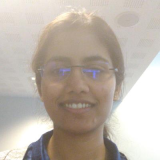
Smita Chakraborty is a MCnetITN3 PhD student working on the development of hadronisation within the Ariadne project.
In particular, the first project was to develop a string “shoving” model to describe collective effects in heavy-ion collisions in terms of string interactions within the Lund model. This is done by constructing the Lorentz transformation to a symmetric frame where two string pieces are in parallel planes to calculate the resulting pairwise force due to the space-time overlap. Considering all such pairs of string pieces in a collision, the resulting total momentum change on a string piece is calculated. There is ongoing work to implement this along with the rope hadronization model in PYTHIA8.
The model will be further expanded for specific processes in heavy ion collisions, for example for heavy quarkonia production processes where the string geometry changes due to the heavy mass of the quarks. Another prospective project is to study the effects of string interactions on jets, known as jet quenching and to analyze the production yields of different hadron species in leading jets.
Leif Gellersen

Leif Gellersen is a postdoc and a former MCnetITN3 PhD student involved with the Pythia project. His project involves the improvement of parton showers through correction with additional matrix elements. A first project was related to tuning of Monte Carlo event generators. Another project is the implementation of scale and scheme variations in UNLOPS merging, which are now implemented in Pythia 8. Further work is directed towards the implementation of matching and merging to higher orders and higher precision, which is anticipated to be of high relevance for future precision measurements, especially at electron positron colliders. Last but not least, he works on fixed colour parton showers with matrix element corrections within the DIRE parton shower, which will be of interest for studying interference effects between QCD, QED and dark photon signatures, and can be used in the context of event deconstruction.
Torbjörn Lundberg
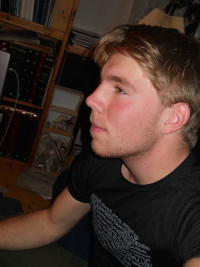
Torbjörn Lundberg is a PhD student working on the development of hadronisation within the Plugin project. In particular he is developing a colour reconnection model to describe collective effects in heavy-ion collisions in terms of string and dipole interactions within the Lund model and implement the this in PYTHIA8.
Harsh Shah
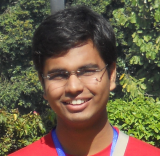
Harsh Shah is a PhD student mainly working on heavy-ion applications of the DIPSY and Pythia8 programs in the Ariadne project.
Malin Sjödahl
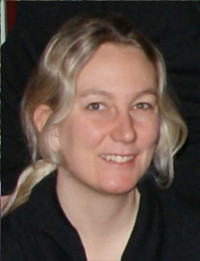
Malin Sjödahl is an assistant professor in Lund and works with improving parton showers with sub-leading Nc contributions.
Torbjörn Sjöstrand
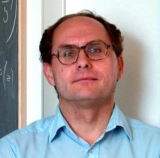
Torbjörn Sjöstrand is the main author of the Pythia program. His research covers almost all aspects of multiparticle production, mainly at e+e-, ep and pp colliders. He is a member of the MCnet advisory committee.
Andrew Lifson
Robin Törnkvist
Korinna Zapp
Timea Vitos
Andrecia Ramnath
Torbjörn Lundberg
Chiara Le Roux
Gösta Gustafson
Rikkert Frederix
Former members
Stefan Prestel

Stefan Prestel is a lecturer mainly working on matching matrix elements with parton showers.
Marius Utheim
Marius Utheim is a former MCnetITN3 PhD student working in the Pythia project with hadron rescattering. In the current implementation of Pythia, after hadrons have been produced in the hadronization stage in Pythia and Bose-Einstein corrections have been made, the outgoing hadrons no longer interact with each other. This is despite the fact that realistically one would expect hadronic rescattering, i.e. hadrons colliding and interacting with each other in processes like elastic and resonant scattering. These interactions have never been implemented because they have been thought to have little effect on the observable distributions. However, more recently it has been suggested that they can havenon-negligible contribution in high multiplicity events after all. One effect that might be observed is increased pT for heavier hadrons, similar to the collective behaviour seen in quark-gluon plasma.
This project is about implementing of hadronic rescattering in Pythia and studying how it affects the event. One particularly central part of this simulation is calculating cross-sections for various low energy (<10 GeV) processes. Once this has been implemented, the underlying mechanisms can also be used to make Pythia more accurate when simulating collisions where the original beam particles have low energy.
Johannes Bellm
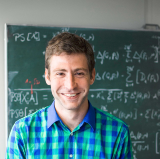
Johannes Bellm is a Postdoc since 10/2017. His research topic is the matching and merging of higher order calculations at fixed order with the parton shower in Herwig.
Christine Rasmussen
Christine Rasmussen is a former PhD student on the Pythia project.
Christopher Plumberg
Christian Reuschle
Former short-term students
Armando Bermudez Martinez
Azimuthal di-jet correlations: Recently in CMS, we have measured the azimuthal separation between the two leading jets in multi-jet events when these are approximately back-to-back. We have also measured the more exclusive and complementary azimuthal separation between the leading jets when the presence of at least an extra much softer jet is required in the event. We have observed a tension between the data and the theory predictions from parton shower event generators as well as from improved predictions using higher order matrix elements.
Part of the effort within the three month MCnet project was to investigate, from the parton shower phenomenology point of you, the azimuthal separation between the two leading jets when these two are approximately back-to-back. We studied the role of the renormalization scale choice in the evolution of the parton shower. In addition, investigated the dependence on the handling of the soft gluon coherence in the shower by studying the pt ordered dipole shower from PYTHIA8, the matrix element corrected shower provided by the VINCIA generator, the angular order shower from HERWIG7, and also the DIRE shower which allows the use of next-to-leading splitting kernels in the evolution. Using PYTHIA8 we assessed the influence of the recoil strategy as well as the cut-off scale for the shower.
We investigated the possibility of measuring the azimuthal separation between the leading jets also in bins of rapidity. This could allowed the enhancement of specific QCD channels and the possible tagging of quark/gluon-like jets in back-to-back topologies. In addition we studied other observables that can be measured in a correlated way with the azimuthal angular separation between the leading jets. In this direction we investigated the jet structure in back-to-back topologies employing for this the so called jet angularities.
As part of the project we also investigated the disagreement observed by CMS for the minimum azimuthal separation in 4-jet events when merged LO samples with up to four partons in the final state are compared to data.
The investigations and subsequent results have been included as a very important complementary part of my PhD thesis.
James Black
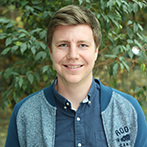
James is a PhD student working on the High Energy Jets project.
Naomi Cooke
Quarkonium production in parton showers: Quarkonia production has been a long-standing puzzle in particle physics. These are mesons which contain quarks of the same flavour, for example J/ψ. The polarisation measurement of J/ψ is expected to have significant transverse polarisation at large pT, but has been experimentally observed to be consistent with zero. Hard production of onia processes using NRQCD formalism are available in the Pythia8 framework. However, these processes alone cannot fully describe the data; LHCb and CMS have shown with normalised cross section measurements of z = pT (J/ψ)/pT (jet) that J/ψ’s are produced softer than expected. Hence the need to incorporate onia production within the parton shower.
Therefore, the aim of this project is to incorporate the main splitting functions of various quarkonia into Pythia8. Then compare results with Ariadne and LHCb/CMS data as cross checks.
Oleh Fedkevych
Four-jet DPS production in pp and pA collisions in Pythia8: In collaboration with J. Bellm, J. Gaunt, A. Kulesza, L. Lönnblad and T. Sjöstrand. In spite of the recent progress in both theoretical and experimental studies many aspects of multiple parton interactions (MPI) still require a detail investigation. In particular, double parton scattering (DPS) processes can play a dominant role for some specific kinematic regions of multi-jet production, especially in proton-nucleus (pA) collisions where a total DPS cross section is approximately 3A times bigger as a corresponding total DPS cross section in proton-proton (pp) collisions. It is also known that DPS is sensitive to parton correlations of various types and that a combined study of DPS in pp and pA collisions at the LHC will provide us a deep insight into a proton’s structure and non-perturbative dynamics of its constituents. However, a complexity of the problem leads to different models of DPS currently available in the literature. In particular there are several approaches to model so called double parton distribution functions (dPDFs) which are important ingredients for every Monte Carlo DPS simulation since dPDFs, among other effects, account for longitudinal parton correlations, flavour and momentum conservation and also for so called “1v2” splitting contribution, a situation when one initial state parton splits perturbatively into two partons which then take part in two hard interactions.
The goal of the project is to compare predictions of a model of DPS built into the Pythia event generator against predictions of other models of DPS available on the market. In particular we have studied two dif- ferent ways to model dPDFs, namely double DGLAP evolution equations and the approach of Pythia based upon dynamical modification of standard collinear PDFs. We have found that the dPDFs modelled within both frameworks obey the same set of generalized sum rules and that both approaches have rather a similar treatment of the “1v2” splitting contribution caused by a gluon splitting into quark antiquark pair at low values of Bjorken-x. We also have found that both approaches have quiet strong disagreement in description of “1v2” contributions at high values of Bjorken-x. Additionally we have studied the impact of both models of dPDFs on various DPS-sensitive differential distributions and established different regions of a phase space where existing differences may become relevant for Monte Carlo predictions.
The model of DPS being used in Pythia has inherited its main concepts from the original Pythia’s model of MPI. Which, in particular, implies that only PDFs used to generate a second hard interaction are modified in order to account for momentum and flavour conservation. This procedure, however, introduces asymmetry of the Pythia’s dPDFs and is in contradiction with the double DGLAP approach. This discrepancy was removed and, starting from Pythia version 8.240, DPS events are generated using symmetrized dPDFs.
It is know that the additional enhancement ∼ 3A of a total DPS cross section in pA collisions is due to DPS processes involving one incoming proton and two different nucleons, so called DPS II contribution. Recently a new model of pA collisions called Angantyr was implemented into the Pythia which, among others, allows to simulate some DPS processes in pA collisions. The approach being used in Angantyr differs in some aspects from the approach being used in currently available publications on DPS. In particular, Angantyr models DPS II contribution via pomeron exchange and, additionally, possesses a non-trivial collective behaviour which leads to contributions similar to those from nuclear shadowing effect. We have compared the predictions of the Angantyr model against theoretical computations currently available in the literature and found that it demonstrates a correct dependence of a total DPS cross section on a total number of nucleons. In addition to it we have studied how the enhancement of a total DPS cross section depends on different jet cuts and found a way to get an additional enhancement of a total DPS cross section in pA collisions comparing to a total DPS cross section in pp collisions evaluated for the same set of cuts.
In October 2018 some of the aforementioned results were presented at the MPI@LHC Workshop in Perugia, Italy.
Mees van Kampen
TMD shower in Pythia: The Pythia8 event generator implements many aspects of a detailed calculation of high energetic hadronic collisions. It is mainly focussed on simulating proton-proton collision processes as in the LHC, however, it is possible to generate events with other beam types such as electron beams for DIS events. Using “vanilla-”Pythia, one has many hard scattering calculation possibilities, the standard parton showers for initial- (ISR) and final- (FSR) state radiation, multi-parton interactions and hadronization models to its dispose. The parton showers simulate the emissions that a proton undergoes before and after the hard process. The showers and MPI are interleaved, which means that they are performed simultaneously when evolving backwards in the transverse momentum scale.
With recently new developed ideas to do event generation using transverse momentum dependent parton densities (TMDs), the aim is to understand more about the role of the current ISR and FSR before starting to implement a new shower in the Pythia framework. Subject of this study are the event kinematics and generated pT scales of emissions. Checks with a single parton emission in DIS have been performed in Pythia to reveal some information about the first parton splitting and the event kinematics. Scatter plots of the first emission in DIS gave a hint that the method of dealing with recoil effects influence the distribution of parton emissions in the phase space. Larger transverse momenta are reached when applying a global recoil instead of a recoil only within a dipole. With checks that involve multiple splittings in one event and looking in different frames of reference, we observed that from the DIS studies we cannot draw strong conclusions on the recoil prescriptions. However, with more skills and knowledge on the procedures from Pythia, a starting point is made to develop a modified version of the shower to include TMDs. The SimpleSpace shower will be used as a template for the TMD shower. Some of the elements can be adapted according to the PB method. The evolution scale will not anymore be related to the transverse momentum, but to the rescaled transverse momentum. The picking of possible scales - done with the veto algorithm - needs to be done according to a Sudakov that is calculated using TMDs. Eventually, the TMD initial shower needs to be interfaced with the final state shower appropriately.
Adam Takacs
Spacetime structure of parton showers with different orderings with and without medium: In the project description I offered two studies after reconciling with possible collaborators from Lund University:
- To study the modeling uncertainties emerging from different choices of ordering variables in parton showers in event generators.
- To study the possible modification of hadronization due to the quark-gluon plasma in heavy-ion collisions.
Unfortunately, I arrived in Lund when the virus was peaking, which made the planned collaboration difficult. Moreover, my collaborators at Lund were on their paternity leave, making the situation more challenging. Therefore, as it was agreed on, I worked on two new projects:
- To do a higher-order, analytic calculation of the jet-substructure observable dynamical grooming. This calculation improved previous precision up to next-to-next-to-double-logarithmic accuracy and made it possible to compare with recent experimental measurements.
- To calculate several jet observables with jet quenching, by using coherent energy loss combined with the so-called Gyulassy-Levai-Vitev medium induced emission spectrum. In this project, several novel heavy-ion techniques were tried, such as Quantile technique, Topics Modeling, di-jet production comparison with gamma-jet.
Both of these projects ended in publications by the end of my stay and so in several conference talks, those are listed at the end of the report. In addition to these, I gave a seminar in the institute and when my collaborators returned, we started to work on the initially proposed projects, however, results have not been ready for publication.
Papers:
Paul Caucal, Alba Soto-Ontoso and Adam Takacs, Dynamical grooming meets LHC data: 10.1007/JHEP07(2021)020 Adam Takacs and Konrad Tywoniuk, Quenching effects in the cumulative jet spectrum: 10.1007/JHEP10(2021)038
